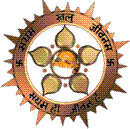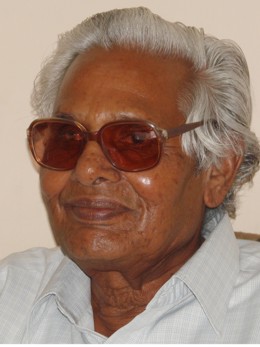
Anuvrata is a network of self-transformed people who volunteer to discipline themselves by accepting small vows and adhering to them out of conviction without expecting any reward for it. It is a movement of small vows or what we call a movement to rid society, nation and the world of moral filth and hatred. It is based on the view that the transformation of an individual into a responsible self-disciplined human being will lead naturally to the ushering in of a non-violent socio-political world order paving the way for the lasting peace in the world, which is torn by strife, terrorism and narrow nationalistic considerations. Selfishness seems to hold the people fast in its grip. It is being institutionalised rapidly and the outlook of the people is getting narrower and narrower.
The Anuvrata movement has been engaged in the noble task of uplifting human life and revitalizing the rapidly crumbling moral and spiritual values among the people of the world irrespective of caste, creed and colour for the last forty-four years. Launched on March 1, 1949 by Acarya Sri Tulasi the head of a Jaina Sect and a leading visionary of India the movement has since grown steadily in size and stature. Though it does not lay claim to any spectacular success or achievement, there is no gainsaying the fact that its universal appeal for self-awakening has created a great impact on the outlook and behaviour of many people. It was hailed and patronized by eminent people like late Dr. Rajendra Prasad, C. Rajgopalachari, Pt. Jawaharlal Nehru, Dr. S. Radha Krishnan and Jai Prakash Narayan. It has been striving to infuse with new life people degenerating fast into what T. S. Eliot aptly calls 'automations or living shadows inhabiting the great wasteland.'
On the day the Anuvrata Movement was launched, Acarya declared:
- First comes religion; and then the community or sect.
- Though sects can be many, there can be only one religion.
- Religion and politics must be kept apart.
- Religion must take care of and improve the life of the people in the present and must not merely stress the hereafter.
- It is character and not worship that is central to religion.
For those concerned about religious reconciliation and welfare of all human beings the message was clear. Narrow sectarianism and parochialism of all kinds was subversive of true religion. If there is only one religion, it will be for all humans whatever and wherever they are. Though there is no acceptable name for this human religion, it would be humanism in the best sense of the world. Hinduism, Christianity, Judaism, Islam, Jainism will all be then names of different sects and not of religions. If taken in the right spirit the above formulation will rule out the possibility of all feuds and wars in the name of religion, for by definition the latter can only be a unifying factor and an instrument for common weal. Further, life in this world is more important than that after death. Religious concerns should directly aim at improving the quality of life and righteousness of conduct should take precedence over formal and ritualistic practices associated with orthodox religion. Here was a veritable manifesto of good living and doing good.
Anuvrata means a small or diminutive vow. No vow, truly speaking, is either small or great. What is meant by a small vow is a vow that is not accepted in its fullness. The name has its origin in the Jaina tradition. Lord Buddha laid down the middle path for the monks. Lord Mahavira set forth a middle Path for the ordinary householders. It is Anuvrata. Acarya Tulasi took cue from Mahavira's Programme to purify the life of his Sravakas and gave it the form of a mass movement transcending all sectarian bounds. As a way it stands between violence and non-violence. As far as possible, it is the path of non-violence. A life without any restraint results in violence, whereas complete restraint leads to non-violence. The former is harmful; the latter very difficult to achieve. It was this insight that lay behind anuvrata. If one finds complete restraint impossible, let him exercise minimum necessary restraint. Anuvrata implies such a minimum necessary restraint. Perfection or the greatest being cannot be divided but it takes several steps to reach it and each step upwards brings the destination closer. The anuvrats or diminutive vows are graded steps to reach moral perfection.
What laid to the birth of Anuvrata movement were the prevailing circumstances after India got independence. After independence every thing was new - the elections, the Government, the administrative experience and the social order. Other leaders got bogged down in their respective political parties. The unity attained during the struggle for freedom was lost. Basic problems, which remained hidden under the dazzle of independence, surfaced gradually casteism, untouchability, communalism, economic disparity, rising cost and beggary were India's basic problems. Then there were post-independence problems like indiscipline, love of office, over-ambition, regionalism, terrorism and language controversies. These and other similar problems caused a lot of suffering to the people as well as a decline in their character. Meanwhile, there was growth in education and general intellectual development. Old beliefs were weakening. New principles were coming into existence. Religious leaders were decrying intellectuals who in turn were trying to reinterpret the past to the former. On the whole the situation was more destructive than constructive and generated more excitement that introspection. None was satisfied with it. Dissatisfaction prevailed in all fields - social, religious and national. People were growing impatient of loss of character and indiscipline. The Anuvrata Movement was born in these circumstances. Emphasizing old vows and values, although it had nothing new in it, gave a correct assessment of the prevailing situation. The people felt assured because the movement was launched as both a diagnosis of and a remedy for the prevailing malady.
Acarya Sri and his companions did not imagine the wide extent of the Anuvrata Movement’s welcome and impact. Initially, they had a modest desire to change the outlook of those in their immediate contact. These people should regard religion not merely as part of worship but as an instrument of purifying character. They should be models of good religious living. This thought troubled his mind for a year or two. Occasionally, it was also talked about. It finally matured in 1949. Keeping the Sravakas in view a list of vows was drawn. Acarya Sri felt that it should be further expanded more and more. Compilation of lists of evil habits as well as of vows went on. Dr. Sohan Lal Gandhi
Dr. Sohan Lal Gandhi